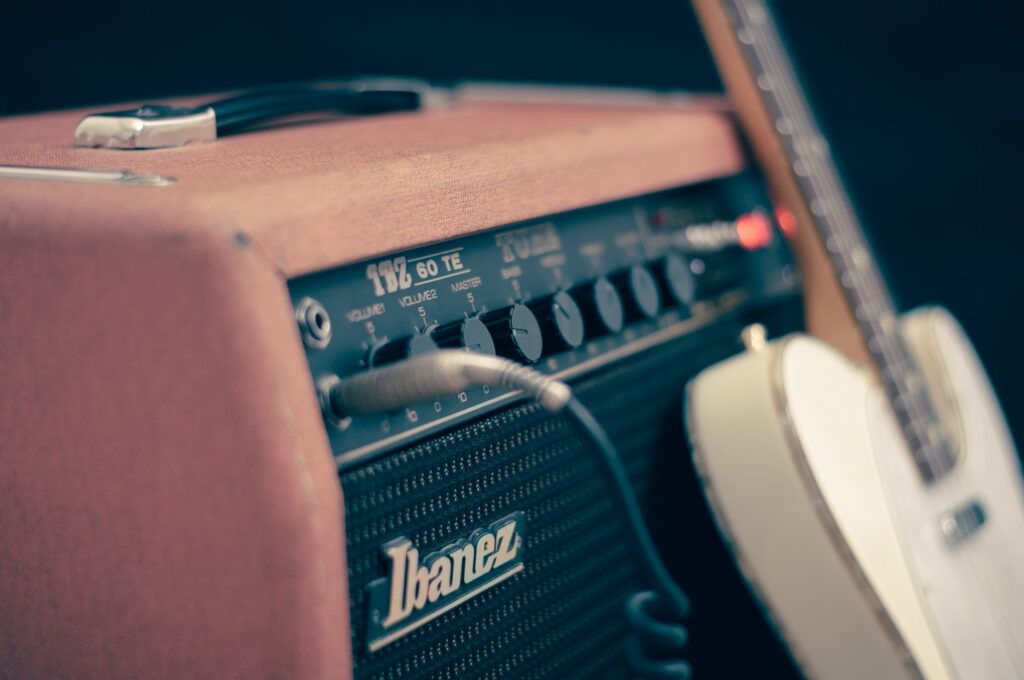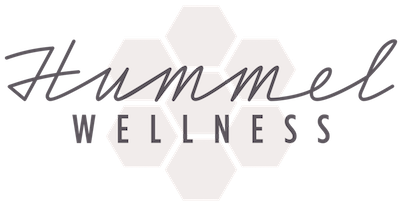
PLEASE INTRODUCE YOURSELF AND GIVE A LITTLE BACKGROUND
I’m Holly Gusnowsky, M.S.,R.Aud, a registered Audiologist and I have been an audiologist for over 20 years (and married to a musician for even longer). I started my career in private practice (diagnostic hearing assessments, tinnitus management, dispensing hearing aids, monitoring OH&S or industrial hearing conservation programs) and moved to the position of community audiologist in public health (hospital settings in Calgary and Edmonton) 2 years later. I was an instructor at the University of Alberta for their Educators of the Deaf and Hard of Hearing Master’s program for 2 semesters and helped establish the Bone Anchored Hearing Aid (BAHA multidisciplinary clinic at COMPRU (now iRSM). One of my most rewarding positions was representing audiologists in the province for 6 years as the Director of Professional Practice for our regulatory body, the Alberta College of Speech-Language Pathologists and Audiologists (ACSLPA) and working with my practice colleagues, Alberta Health and the Alberta Medical Association (AMA) to obtain the right for Audiologists to hold a PRAC ID (for direct referral to Otolaryngology). In addition to my regular caseload of clients of all ages and abilities, I am currently our hospital’s representative for implementation of the Early Hearing Detection and Intervention (EHDI) program and team lead/supervisor/consultant for Audiology in the Rehabilitation Department. I love working as an audiologist because it means I get to learn and adjust to different settings, working with and advocating for many different populations (hearing loss does not discriminate). It means never getting bored; it could be that I assess 5 separate two year olds in a day and none will be like the other!
For those who are not familiar, audiologists work with all populations and ages. They are hearing and balance specialists with at least a Master’s degree that do not just test hearing or sell hearing aids (not all do and not all hearing losses benefit from hearing aids). They diagnose hearing loss and assist physicians in determining where a problem is occurring in the auditory system in order to direct treatment and in Alberta, audiologists can determine need for and refer directly to an ear doctor, if warranted. Audiologists are the most knowledgeable hearing professionals in leading hearing screening and hearing conservation programs and can also offer treatment and counselling for patients with tinnitus (ringing or buzzing in the ear), something musicians may also experience in their careers, with or without hearing loss.
WHAT ARE BASIC EAR CARE RECOMMENDATIONS FOR MUSICIANS?
One’s experience with music is just as much about “the feel” and endorphin rush experienced with volume as much as it is about the song; I get that, I do. However, everyone will likely expect me to launch into the obvious, “protect your hearing” message but it’s bigger than that. My advice is that musicians take caution with their hearing health by being aware of sound output levels, from wedge or in-ear monitors to their own or other instruments (drums or horns) in their environment and take an active interest in the longevity of their own hearing health.
I think this is important because musicians are at risk for developing permanent damage at the level of the inner ear (hair cells) and may require hearing aids later on in life. Repeated exposures (number of times and duration) to intense music (volume) are important to consider how it will impact one’s hearing as damage will likely be accented by the aging process more so than someone who wasn’t exposed to noise at all. Musicians who also work in noisy industries or who have used firearms (i.e. hunters, military) are at greater risk for demonstrating hearing loss at an earlier age; their ears just don’t get a break.
Understanding limits of exposure and volume helps musicians to play an important advocate in their own hearing health. Sound has the potential for damaging the inner ear at a volume of 85dBA (i.e. vacuum) over 8 hours but the “safe” time allowed above 85dBA decreases exponentially with every increase of 3dB. So at 88dBA, the listener would be at risk of inner ear damage after 4 hours of exposure and 91dBA (i.e. lawnmower) only 2 hours; jump to 120dBA (i.e. concert or stage volume) and there is no “safe” exposure time. These “doses” are also accumulative despite breaks in between gigs or rehearsals. So, what can a musician do?
Musicians protecting and taking a vested interest in their own hearing health means they can use or advocate for others to use physical and engineering controls to reduce exposure to damaging volumes when playing, which in turn can allow them to play and enjoy music longer, career wise. These include the use of plexiglas barriers, tactile generators (for drum or bass), in-ear monitors (can also be damaging if too loud and require a good sound tech) and of course, ear plugs. Another suggestion for instrumentalists is to vocalize or hum along to the music, even if they are not the singer! Humming will activate contractions in the stapedius muscle in the middle ear, which in turn mutes the transmission of sound, however slightly. Who knew, right? Every little bit counts.
WHAT ARE BASIC EAR CARE SUGGESTIONS FOR MUSIC INDUSTRY PROFESSIONALS?
Basic ear care is essential for everybody. I am sure many of your readers have heard the saying, “Nothing smaller than your elbow!” (a tongue-in-cheek, don’t-stick-anything-in-your-ear dictum, which refers to ear cleaning, specifically). That means no bobby-pins, car keys or commercial cotton swabs (it even says so on the box!); I don’t care how itchy your ears are or how good it feels, lol! Ears are self-cleaning; the skin in the ear canal grows outwards from the eardrum to the opening of the canal, bringing ear wax with it. A swab can push wax back in, at the very least creating a blockage. A swab and other makeshift instruments can puncture the eardrum or scratch the exquisitely thin skin causing pain and introduce infection. Talk to a physician or an audiologist about the amount of wax in your ears before trying to self-treat what you think might be wax buildup; it might be permanent hearing loss. If it is wax, they can remove it or offer solutions about how to safely deal with it.
The other piece of advice, obviously would be to practice hearing conservation techniques, as musicians would. Who hasn’t cranked their favourite tune louder than the previous one played? The problem is, no one carries around a sound level meter with them (although apps are now available on iPhone and Android) to determine the volume of the music (i.e. in headphones or loudspeakers). As I stated earlier, anything louder than 85dBA has the potential for being damaging to the ears so rule of thumb would be, if you have to raise your voice to speak above the noise, 1) turn it down, 2) walk away (distance helps) and/or 3) wear ear plugs. That, and everything in moderation. Enjoy how wonderful music is to your ears and brain and don’t avoid it! That’s my advice even to the fathers out there with teenage daughters with hearing loss and hearing aids, who love listening to Justin Bieber… let them! Long live musicians!
WHEN SHOULD YOU SEE AN EAR DOCTOR?
Ear doctors (aka ENTs or otolaryngologists) are specialists that medically or surgically treat diseases of the ear and investigate causes of disruption in the auditory system. Hearing loss can be a direct result of long term exposure to intense sound that does not require that level of medical intervention. Other times, hearing loss does warrant a referral to an ear doctor for urgent treatment.
Sudden loss of hearing (i.e. over night and over 3 days without recovery) in one or both ears could mean anything from a virus to a stroke or growth on the hearing nerve and consultation should take place within 7 days with an ear doctor. In most cases, medical investigation is also warranted with longer term unilateral inner ear hearing loss or unilateral disabling tinnitus.
If you suspect a problem with your hearing or chronic tinnitus, see an audiologist first to have your hearing and ears examined thoroughly. The result of the audiologist’s assessment will try to rule out outer ear (i.e. wax build-up) or middle ear dysfunction as a cause of the issue before referring to the specialist.
ARE EARPLUGS IMPORTANT?
The ultimate goal of wearing ear plugs is to protect your ears from damage and subsequent hearing loss but wearing them will also increase your time limit of safe exposure to loud sounds and reduce distortion of speech and lyrics at the level of your inner ear when sounds exceed 90dBA (hearing your mates sharing important verbal information with intense background noise present).
A colleague of mine, Marshall Chasin has stated, “hearing loss may be the least of your worries as a musician”. Hearing loss may cause a loss of perception of volume of individual frequencies (high frequencies in particular) that can be corrected with hearing aids but he goes on to say, in part, “can bring bring on other career ending conditions”: 1) tinnitus; a potentially permanent disabling condition, a subject that would require a whole other article… 2) a little known side effect of pitch perception distortion; where the listener may hear a note as “flat” or “sharp” but differently than it was played and potentially, 3) recruitment; a perceived intolerance to loudness of certain frequencies or sounds. Bottom line? Protect those hair cells!
Ear plugs are readily available over-the-counter (i.e. foam) or personally fit (i.e. occupational or musicians’ plugs) through a private practice audiologist and all come in different noise reduction ratings (NRR); the NRR is only as good as the device is fit and plugs may not actually provide the attenuation as suggested on the box, if purchased off the shelf. Musicians have experienced great success with deep fit personal musicians’ plugs as they come in different NRR (15 and 25dB filters) and typically reduce the occlusion effect (i.e. talking in a barrel”) for vocalists. The deep fit is required to isolate the vibration from the cartilage in the ear canal, so getting a proper mold made is also important. The musicians’ plug and in-ear monitor molds should be made by a qualified health professional, as the technique is deemed a “restricted activity” in many provinces and can cause pain and damage to the ear canal or drum, if not done correctly. If you aren’t sure if the professional you are seeing is an audiologist, just ask.
Thanks again for the opportunity to help Unison on its mission of providing counselling and services to the Canadian music community. When music is present, we all benefit.





